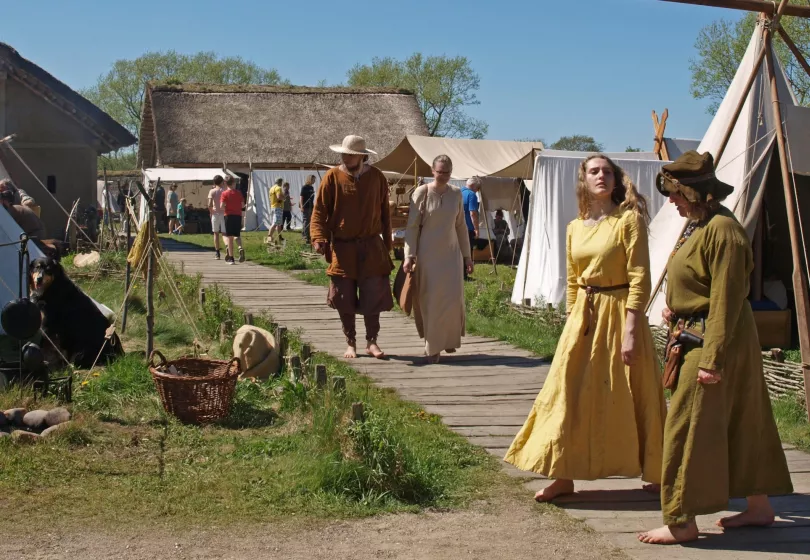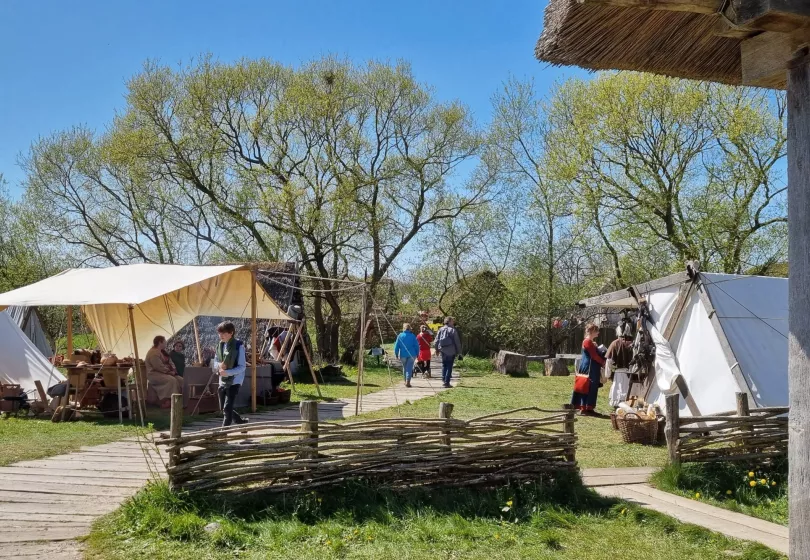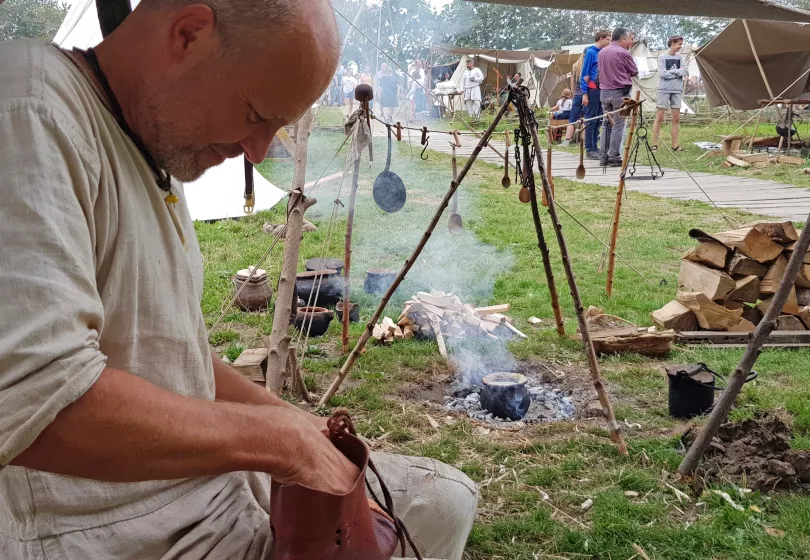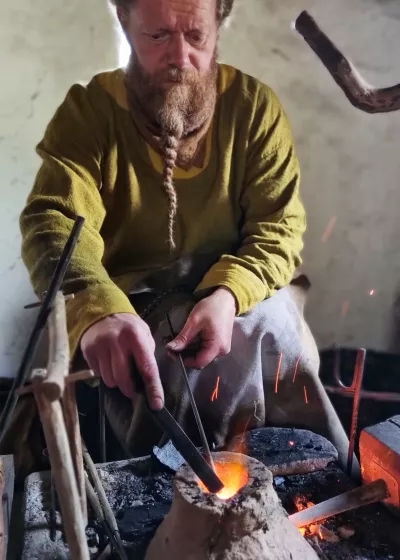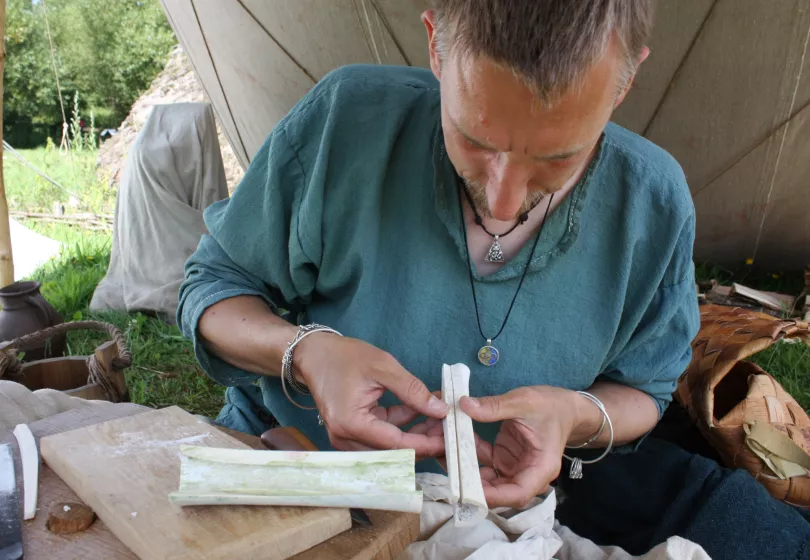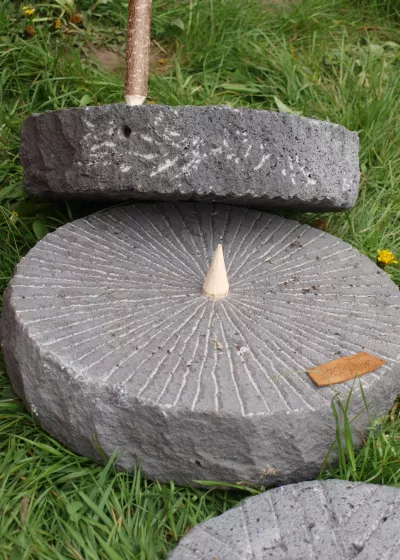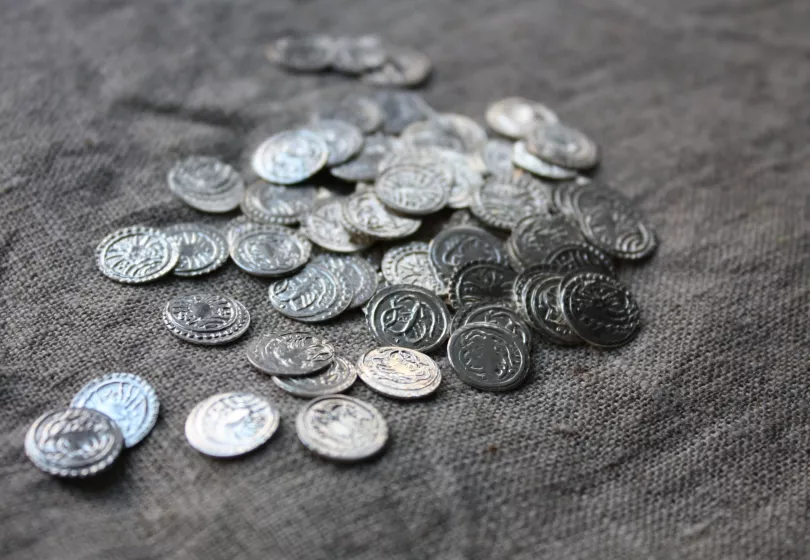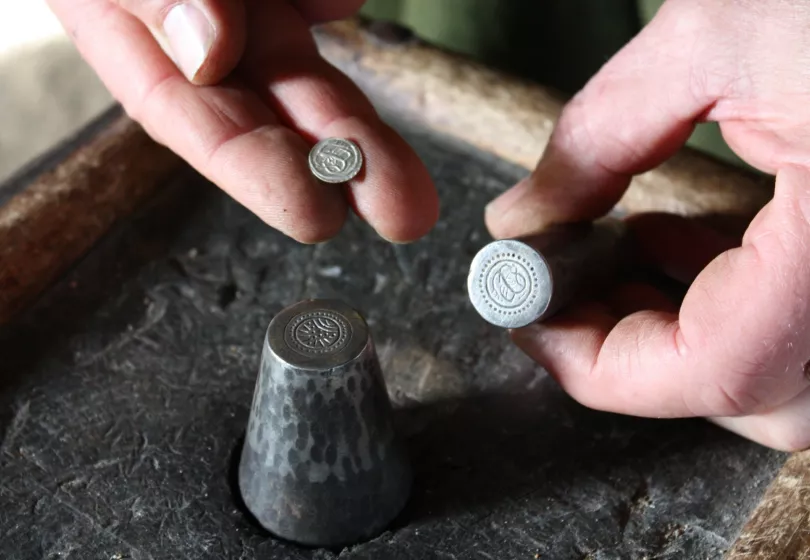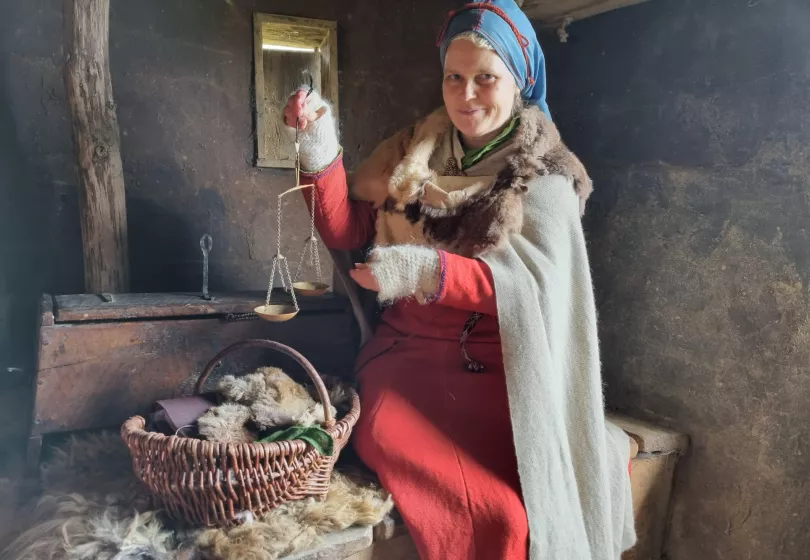The oldest town in Denmark ... and Scandinavia
Ribe, Denmark's oldest town, was founded around 700 AD on the north side of the river Ribe Å, where the street Sct. Nicolaj Gade is located today. Back then, the town was known as Ripa. Deep beneath the present Sct. Nicolaj Gade, archaeologists have uncovered house floors, layers of waste, lost objects and other traces of the people, crafts and trade goods of the time. They have also excavated a plank road which, from around 700 AD until the 900s, served as the main street of a trading site estimated to have been about 65 metres wide and over 200 metres long. Workshops and stalls lined the plank road. The plots were defined by narrow ditches and wicker fences, and from the marketplace, there was easy access to the river and the harbour.
It can be hard to imagine the scene of the Vikings’ bustling trading hub, but you can visit Ribe VikingeCenter, where we have reconstructed around one fifth of the marketplace.
The beginnings of the marketplace
It remains uncertain who established the trading site. Looking at the geography and archaeology, the 7th and 8th centuries saw a shared Frisian culture stretching along what is now the Danish, German, and Dutch coastline, where a series of trading sites emerged. Ripa is the northernmost of these sites, founded near the edge of the South Scandinavian region. It may well have been Frisian merchants who settled here and started a seasonal market with the aim of distributing their goods in the area. Within a few years, influential Danes probably took an interest in taking over and controlling the site. The division of the area into plots and the use of local coinage – the so-called Wodan / Monster sceattas – are clear indications of this.
The marketplace was divided into 40–50 plots, where craftspeople and traders could set up their stalls, probably in exchange for some kind of fee. Archaeological investigations carried out in 2018 show that proper buildings stood on some of the plots as early as 710 AD, though it remains unclear whether these houses were inhabited year-round or only during the warmer months.
Crafts and trade goods
Workshop waste has been found from the working of textiles and leather, horn, bone, glass, amber, bronze casting and more. A large number of imported goods have also been uncovered at the marketplace: shards of drinking glasses, whetstones, quern stones, whale bone, rock crystal, jewellery, and pottery. Manure remains indicate that livestock was traded here, and we must also imagine a brisk trade in perishable items such as wooden and bark objects, furs, bread, flour, fish, salt and the like.
A marketplace with its own currency
Goods and services were bartered, but small silver coins were also used as a means of payment from the very beginning. In the early 700s, foreign traders introduced a new culture to Ripa by bringing coins with them. Excavations show that by around 720 AD, these foreign coin types were replaced by Ripa’s own currency, which remained in use until about 800 AD. Around 150 examples of these coins - the so-called Wodan / Monster sceattas - have been found scattered across the marketplace. In the surrounding villages, however, Ripa’s coin has been found only once, suggesting it was closely tied to the trading activities at the site.
Ripa is the first known place in Denmark where a monetary economy was introduced.
The marketplace in Ripa develops
By the mid-8th century, the plots that had characterised the trading site shortly after its founding had almost disappeared, and excavations in 2018 confirmed that several larger workshop buildings now stood on the site.
Ribe’s location by the North Sea was crucial to the town’s development. Goods were transported via waterways, creating a strong and far-reaching network of trading towns, and by 800 AD, the sailing ship was making its breakthrough in the North. One could say that Ribe served as a bridge between worlds.
For a craftsperson, settling in Ribe would have been particularly attractive, with access to raw materials and excellent opportunities to sell one’s goods. Rich evidence has been found of many specialised craftspeople, including blacksmiths, amber workers, leatherworkers, comb makers and jewellers. They settled in the town and lived there for generations.
Archaeologists have also uncovered traces of several bead-making workshops, some small and temporary, and one larger, permanent workshop. The raw material (coloured glass mosaics) had been brought to Ribe from far away, and the glass beadmakers worked with various colour combinations. However, from around 780 AD, large quantities of mass-produced beads seem to have been imported from cities such as Raqqa (in present-day Syria), displacing local production. In that sense, Ribe’s glass beadmaker became an early casualty of globalisation.


